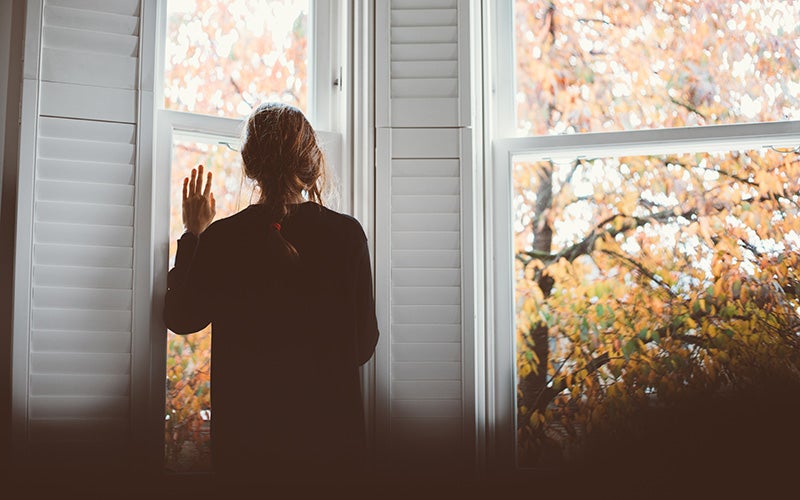Autumn blues be gone! 11 tips to keep your moods up as the temps drop
 ©Photographer, Basak Gurbuz Derman
©Photographer, Basak Gurbuz Derman
The days get shorter and right on cue your mood drops into the basement? That doesn’t have to be the case. With these tips, you can enjoy a golden autumn and start the winter with good cheer.
How Can I Tell If It’s Autumn Blues?
With shorter days and dwindling daylight, the inner slacker who’s often on vacation over the summer suddenly comes out again. Workout or binge watch a series? Healthy snack or chocolate lava cake with whipped cream? It can get much harder to answer these questions on a gloomy autumn day.
Classic symptoms of the autumn blues or seasonal affective disorder range from fatigue, irritability, stress, listlessness, melancholic mood, and mood swings to temporary periods of depression. Usually there’s no actual reason that justifies this lack of cheerfulness. Instead, it’s the lack of light and cold weather affecting your mood.
Physical symptoms such as weight gain, altered appetite, ravenous cravings, muscle tension, and digestive problems can also accompany the autumn blues.
For it to be called the autumn blues your low mood usually needs to last two weeks or longer. After all, 1-2 days with a bad mood also occur in summer.
When we talk about autumn blues in this text, we’re referring to the definition described above. Often, the autumn blues are also referred to as seasonal depression or winter depression, but depression can also be a serious clinical condition that requires medical attention. If you think you or people around you may be suffering from clinical depression, seek professional help.
What Causes Seasonal Affective Disorder?
It’s not only the nature around you that changes with the seasons, but also your body. In autumn and winter, your usual hormone balance shifts. This shows up in two main ways.
More sleep hormone, less stress and happiness hormones
Your inner clock is controlled by the regular interplay of the hormones melatonin and cortisol. If your melatonin level increases, your cortisol levels decrease and you feel tired. When it stays lighter longer, the opposite effect occurs.
The lack of light in the dark season can cause your melatonin level to rise earlier in the evening or afternoon and fall later in the morning. That means you’re tired more often and less active overall.
In order to produce more melatonin, your body converts the happiness hormone serotonin into melatonin. As your levels of serotonin decrease, you get more susceptible to bad moods.
Decreasing vitamin D levels
Strictly speaking, vitamin D is actually a hormone produced in the skin by sun exposure and is a precursor to vitamin D3. Vitamin D levels are closely linked to your mood and contribute to normal immune system function.
It’s important to avoid vitamin D deficiency, especially in winter. Have your levels checked regularly and supplement with vitamin D between October and March if necessary.
Changes in your everyday life
Your daily life also changes in the fall. In many industries, pressure at work increases as the year draws to a close. This results in higher stress levels at a time when your natural energy levels are lower and you need more rest.
Social life also changes with the onset of fall and winter: evenings with friends outdoors are replaced by more time indoors and alone. This also usually means you exercise less: The more time we spend at home, the less we move in our everyday lives.
But it’s important to keep exercising because it helps combat stress, promotes the release of happiness hormones, boosts self confidence, and just makes you feel good about yourself. If you don’t want to or can’t go to the gym, you’ll find plenty of inspiration for your workout at home in our free workout database. With equipment, without equipment, to build muscle, lose weight, or just for fun.
11 Tips to Fight the Autumn Blues
Even though a bit of cold weather blues isn’t that unusual, it’s better to not take it lightly. The sooner you start fighting seasonal depression and doing something about its early signs, the less likely it is that the darker seasons will put a long-term damper on your spirits. The following tips are the perfect mood boosters for when the fall blues are right around the corner.
#1 Start your day right
This hashtag phrase is even more important in the colder months. Your start to the morning sets the tone for your day’s mindset. Make it count. Especially when the nights get longer and you really just want to lie in bed, a morning routine is worth its weight in gold. When something nice is waiting for you in the morning, anticipation acts as the first mood booster of the day.
Bonus tip: In addition to rituals, regular bedtimes and wake-up times also help keep your hormones in balance.
#2 Get a SAD lamp
Let’s stick with the morning theme for a moment. Daylight lamps, sometimes called SAD lamps, can trick your body into dropping melatonin and increasing serotonin levels. Light wakes you up, lifts your spirits, and reduces your sleep hormone levels.
The lamps emit light in a color similar to daylight and can compensate for the lack of sunlight in the fall. These lamps come in all sorts of shapes and sizes. How long you can or should use them each day depends on the intensity.
Light therapy lamps stimulate the release of serotonin and are often used as an supplemental therapy for seasonal affective disorder.
If you’re healthy, light therapy makes sense especially in bad weather and in the morning. If you use it too late in the day, it’s just going to throw your rhythm off.
#3 Take alternating showers
Taking cold showers in the winter sounds counterintuitive, but it can boost your energy. Fans of alternating showers claim to feel more energetic and happy, report fewer illnesses, and feel less sensitive to cold overall.
Scientific research has shed some light on the mechanisms behind these positive effects. Cold water activates the sympathetic nervous system and releases stress hormones including cortisol. It wakes you up, stimulates blood circulation, and gets you ready for the day. It can also help fight the dry skin caused by taking too many hot showers.
Our tip: Try it out for a month and see if alternating showers help you fight the autumn blues.
Followers of the Wim Hof method go one step further. They swear by ice-cold water in combination with specific breathing exercises. Find out more here.
#4 Take a forest bath
Walks and fresh air are a time-out for the mind, body, and soul – and they’re even better in the forest walks. The oxygen content in the air is higher, and it’s less polluted. In Japan, forest walks – or more specifically: forest bathing – are even on the official list of medical recommendations for better health.
The magic ingredient behind this is terpenes. Trees release these substances to protect themselves from pests. According to Japanese studies, they also strengthen your immune system. Learn more about them here:
10 reasons to take a walk in the woods

If you can, go for a nature walk during the light hours of the day. Direct sunlight during midday is especially beneficial in the winter months ahead.
#5 Focus on the golden hours
Beyond the beautiful shades of the leaves changing, autumn has so many other beautiful aspects: young wines, quiche, and onion tart are in season, and a hot tea or cocoa tastes twice as good after a long day in the woods when sitting bundled up warm in the late sunshine. Feeling the last warmth of the day on your face gives you an incomparable sense of calm.
Write down the things you like most about autumn and focus on them in the months ahead. Maybe make your own little bucket list to check off every autumn!
#6 Forget FOMO
Gray on gray and constant rain? Great, finally there’s nothing to feel like you’re missing out on. Even long rainy afternoons have their magic. Enjoy the day with a book, a series, or just pure relaxation at home. Start that project you’ve been putting off all this time. Try out new recipes with seasonal vegetables. Plus, it’s the best time to go mushroom hunting.
#7 Eat pumpkin
Take advantage of nature’s gifts at the start of the new season. This seasonal comfort food is one of the best reasons to look forward to the end of summer. And best of all: pumpkin is good for you!
#8 Try aromatherapy
Aromas from essential oils are perceived and processed through the limbic system in the brain. If you choose scents that you associate with relaxation and calm, they can actually have physical effects.
#9 Treat yourself
Sauna, floating, a long bath, massages, or whatever your idea of wellness is, are way more fun in the freezing cold than in the best bathing weather. The dark season allows you to take the time to fully enjoy these things.
#10 Laughter, cuddling, and exercise are the best medicine
Laughter makes you happy and healthy. So much so, in fact, that researchers have dedicated an entire field of study to the health effects of laughter – gelotology.
Speaking of nice things: Cuddling with a friend, family, partner, or pet releases the hormone oxytocin. This bonding hormone makes you feel more calm, confident, and relaxed, triggering a sense of well-being.
Whether it’s in the form of a walk, home workout, or gym session: exercise helps against bad moods. It releases serotonin and endorphins and just helps you clear your head. So get out of bed and into your sneakers!
#11 Change your relationship to the darker months
Every season has its own unique upsides. Try to respect the different energy in the colder months and live with nature’s natural cycle. While spring and summer are time for outdoor activities, socializing, and new adventures, fall and winter give you time to reflect and grow in different ways.
Focus on the positive aspects of winter: use the dark season to take time for yourself, slow down, and recharge your batteries. Maybe there’s some things you want to do that you missed out on in the summer because of all the active living you did?
Conclusion
- The autumn blues come up as a result of a seasonal lack of natural light.
- The darker seasons alter your balance of hormones, which can cause you to feel a bit down.
- Seasonal affective disorder is not the same as depression.
- You can do something about the autumn blues: exercise in the fresh air, laughter, sports, and other small adjustments help chase away your bad mood – even when it’s cold.
Sources for this article
We at foodspring use only high-quality sources, including peer-reviewed studies, to support the facts within our articles. Read our editorial policy to learn more about how we fact-check and keep our content accurate, reliable, and trustworthy.

































